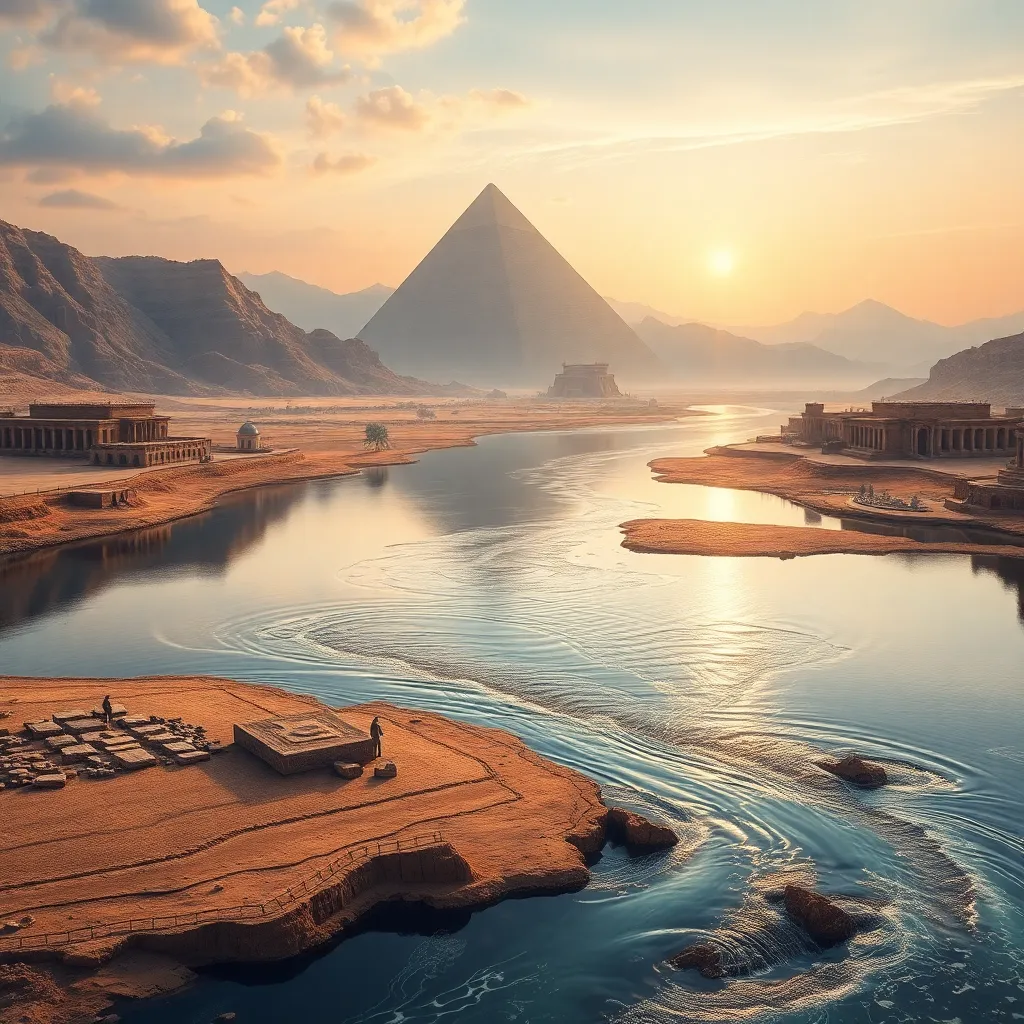The Myth of the Eternal River: The Nile’s Cosmic Flow
I. Introduction
The Nile River, often referred to as the lifeblood of ancient Egypt, has played a crucial role in shaping the history, culture, and identity of the region. Its vast waters not only nourished the land but also inspired countless myths and legends that reflected the beliefs and aspirations of the Egyptian people.
Among these narratives, the concept of the “Eternal River” emerges as a powerful myth, symbolizing the river’s endless flow and its vital contribution to life. This article aims to explore the multifaceted symbolism of the Nile, juxtaposed with the realities of its existence, and to understand how this mighty river has influenced human civilization through the ages.
II. Historical Context of the Nile River
The Nile River has been central to the development of ancient Egyptian civilization. Flowing over 6,650 kilometers, it is the longest river in the world, traversing through multiple countries before reaching the Mediterranean Sea.
- The Nile’s Role: The river provided water for drinking, irrigation, and fishing, making it a cornerstone of agriculture. The annual flooding of the Nile deposited nutrient-rich silt on the banks, allowing crops to flourish.
- Myths and Legends: Ancient texts, such as the Pyramid Texts and the writings of Herodotus, recount the significance of the Nile in the daily lives and spiritual beliefs of the Egyptians.
- Settlement Patterns: Many of Egypt’s ancient cities and monuments, including Thebes and Memphis, were established along the river, highlighting its importance as a center for trade and culture.
III. The Nile as a Symbol of Eternity
Water has always been a powerful symbol in various cultures, often representing life, purification, and renewal. In Egyptian mythology, the Nile encapsulates themes of eternity and cosmic order.
- Life, Death, and Rebirth: The Nile’s annual floods symbolize resurrection, as the land awakens from the dry season, echoing the cycle of life and death in human existence.
- Cosmic Order: The river is viewed as a representation of Ma’at, the ancient Egyptian concept of truth, balance, and order. Its predictable flooding mirrored the cosmic order that the Egyptians sought to maintain.
IV. Scientific Understanding of the Nile’s Flow
While the Nile is steeped in myth, it is also a subject of scientific study. Understanding the geological and hydrological aspects of the river is crucial for its preservation.
- Geological Aspects: The Nile flows through diverse terrains, from mountains to deserts, and its waters are fed by various tributaries.
- Climate Change and Human Intervention: Modern challenges such as climate change, dam construction, and agricultural practices have altered the natural flow of the river.
- Current Challenges: The Nile faces serious threats, including drought, pollution, and water disputes among countries that rely on its waters.
V. The Intersection of Myth and Reality
Myths often shape how societies perceive natural phenomena. The stories surrounding the Nile have preserved cultural identities and influenced behaviors towards the river.
- Shaping Perceptions: Myths about the Nile’s miraculous qualities have fostered a sense of reverence and stewardship among the Egyptian people.
- Storytelling: Oral traditions and written texts have kept the Nile’s legacy alive, passing down values and knowledge through generations.
- Modern Interpretations: Contemporary artists and writers draw upon the Nile’s rich mythology, reinterpreting its stories for new audiences.
VI. The Nile in Contemporary Culture
Today, the Nile remains a significant cultural icon, inspiring artists, writers, and activists alike.
- Art, Literature, and Media: The river has been depicted in countless works of art, literature, and films, symbolizing beauty, mystery, and tragedy.
- Spiritual and Ecological Movements: Modern movements focused on sustainability and environmental preservation often center around the Nile, advocating for its protection.
- Cultural Tourism: The Nile attracts millions of tourists each year, drawn to its historical sites and the vibrant culture that flourishes along its banks.
VII. Future Implications for the Nile River
Looking ahead, the future of the Nile is fraught with challenges, yet there are avenues for hope and renewal.
- Ecological Future: Predictions indicate that climate change may lead to further alterations in the river’s flow and health.
- Sustainable Practices: Implementing sustainable agricultural and water management practices is essential for conserving the Nile’s resources.
- International Cooperation: Collaborative efforts among Nile Basin countries are vital for equitable resource management and conflict resolution.
VIII. Conclusion
The Nile River stands as a remarkable testament to the interplay between reality and myth. Its waters have enriched civilizations, inspired stories, and shaped cultural identities across millennia. As we reflect on the enduring legacy of the Nile, it becomes clear that protecting this vital resource is not only crucial for Egypt but for the entire region.
We invite readers to engage with the story of the Nile, to appreciate its significance, and to advocate for its future. The myth of the Eternal River continues to flow, and it is up to us to ensure that its waters remain a source of life and inspiration for generations to come.




